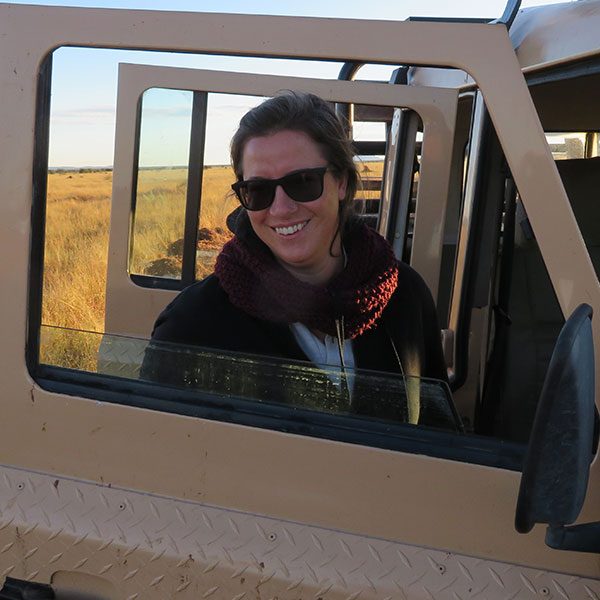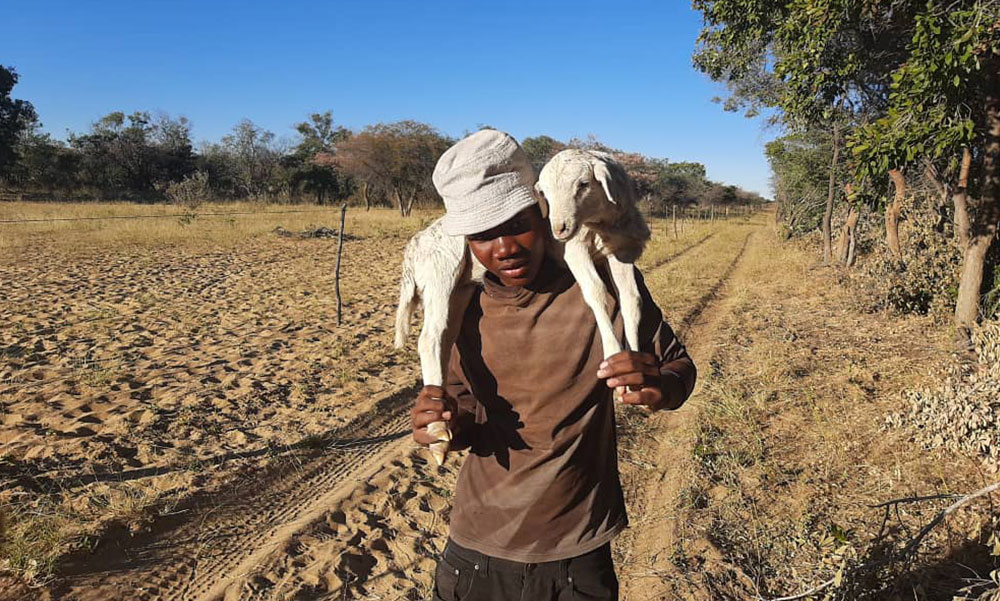Cold Camping and Sick Farm Animals
-

- by Nadja LeRoux July 22, 2020

CCF’s team has been accommodated at our Ranger, Uno’s, homestead where we had a traditional meal of Potjie (a type of unstirred stew typically cooked in cast iron over a fire) and Pap (a dish to go alongside that’s a bit like a porridge). Uno’s dog and cat joined us for dinner and leftovers are the predominant source of food for domestic animals at rural homesteads.
Usually when we’re camping we are up and on the move early to get to our next site. If we face any delays or setbacks along the way and there’s no time to set up camp, then the back seat of our vehicle makes a fine place to sleep. Temperatures can go below 0°C in Namibia during this time of year, so at the end of the day we do a quick warm bucket bath behind the car and then warm up next to a hot bed of coals. After a hearty meal we quickly get into bed before it gets too chilly.

In the morning we often awake to an icy spectacle as everything is frozen in our camp. In the field even the top layer of the sand at our camp can freeze at night. At times the water in our kettle is also frozen in the morning. Winter is a season with high rates of human-wildlife conflict with predators, so we are needed in spite of the frigid conditions.

On a recent response call, the team was stopped by a farmer whose horse had an abscess that had been festering for about two months already. We showed him how to properly clean the wound with a saline solution, flush it out thoroughly and spray with an antibiotic spray.
We went through the everyday aftercare of the lanced abscess and also told the farmer that if it was left untreated the wound would spread further and could lead to necrosis. We often come across wounds like this, and we always assist to show farmers how to easily treat the injury.
At dusk about a few 100m from our camp, the field team came across a lone lamb. We let the son of the nearby farmer know that we’d spotted her, and he brought her back to the kraal.


On his way back he came by our camp where we had a quick look at the lamb and we could see that something wasn’t right. After a quick check, we determined that with a high temperature and a lot of mucous discharge from her nose. She was clearly struggling to breath. It was very likely she was developing pneumonia, very common in cold temperatures with lambs.
We gave her some fluids and a VitB12 shot with a subcutaneous drip, and ensured she was kept warm and cozy in the kraal. We recommended the farmer monitor the lamb’s nursing and make sure that she was getting enough fluid. The following day, after a quick checkup, we were pleased to see that the lamb was on the mend and we could see that she was feeling much better.
Related Reading
-
December 4, 2024
Double Your Donation for the Cheetah -
June 15, 2024
Snake Aversion Training




